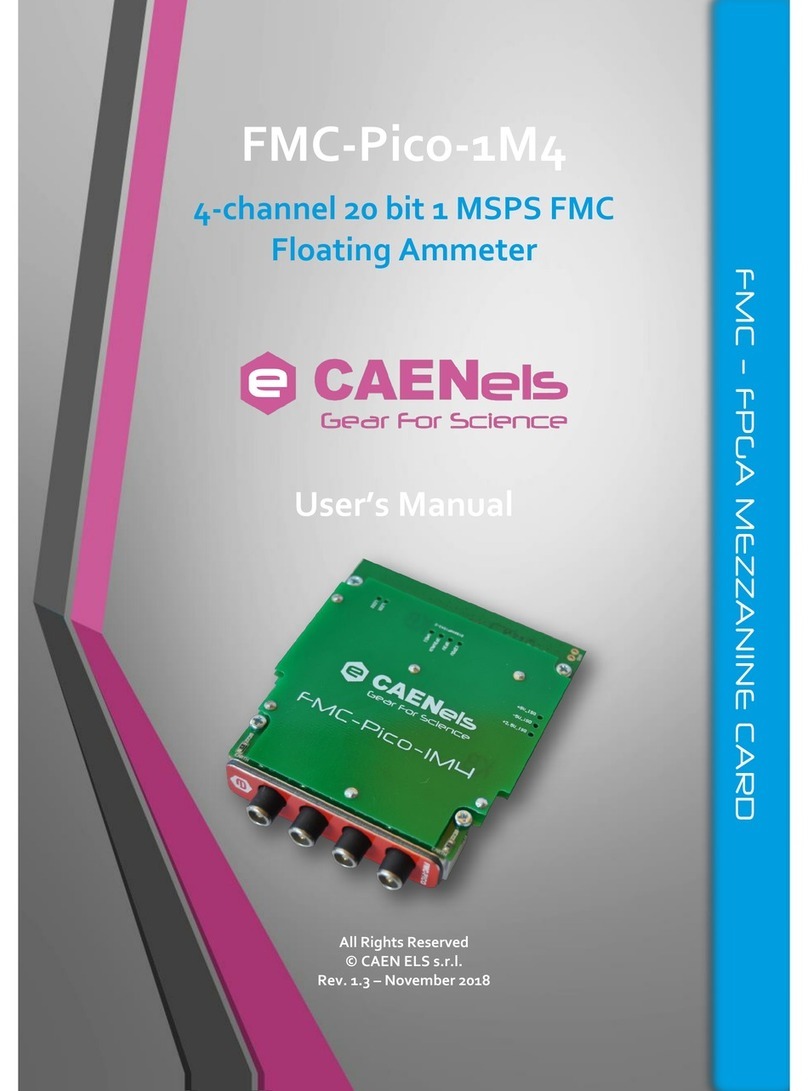AMC HV-PANDA User’s Manual
8
1.Introduction
This chapter describes the general characteristics and main features of AMC
HV-PANDA Advanced Mezzanine Card.
1.1 AMC HV-PANDA Overview
The CAEN ELS AMC HV-PANDA is a standard Double-Width Full-Size
(Height) Advanced Mezzanine Card (AMC) board that hosts 4 High Voltage power
supply modules with paired floating ground returns. It is mechanically and electrically
compliant to the AMC.0 R2.0 standard with the modifications required by MTCA.4
Revision 1.0 (PICMG AMC.0 R2.0 “Advanced Mezzanine Card Base Specification”
and PICMG Specification MTCA.4 Revision 1.0 “MicroTCA Enhancements for Rear
I/O and Precision Timing”) and follows DESY (Deutsches Elektronen-Synchrotron)
recommendations for Rear Transition Modules (RTM) connections version D1.1.
The board hosts up to four (4) CAEN High Voltage (HV) modules which are
available in ranges from 500V up to 6kV, both positive and negative polarity, and
currents up to 3mA for a maximum output power of 7 Watts. Every pair of channels
shares a common ground return that is allowed to float up to ±120 V (factory limited to
±15 V for safety reasons).
Each channel has an independent dry interlock available through a connector on
the AMC front panel. The individual interlock inputs are referred to the AMC board
ground and can be factory configured to work with OC pins or active controllers that
are 5V TTL compatible. On the AMC front panel is also available a globaldryinterlock,
whose ground is allowed to float up to ±24 V, that acts on all 4 high voltage channels
simultaneously.
An auxiliary +12V power input connector is available on the front panel to
provide the required current to the HV channels when the AMC card is used in
conjunction with a power demanding RTM board.
Front panel LEDs provide information on board operational conditions and HV
channels status: voltage polarity, over-current , channel ON/OFF.
A metallic shield on Component Side 1 and two plastic covers on Component
Side 2 have the function of protect the user from inadvertent contact with the internal
electronics that could be floating up to ±120 V.
The AMC board transfers data on the MTCA backplane by means of a PCI
Express 1.0 x1 communication link on port 4 and a Gigabit Ethernet connection on port




























